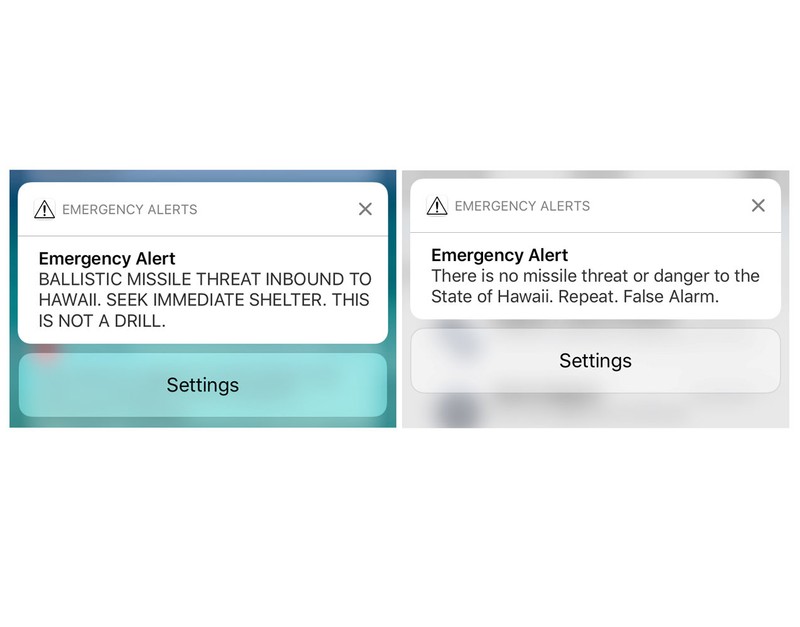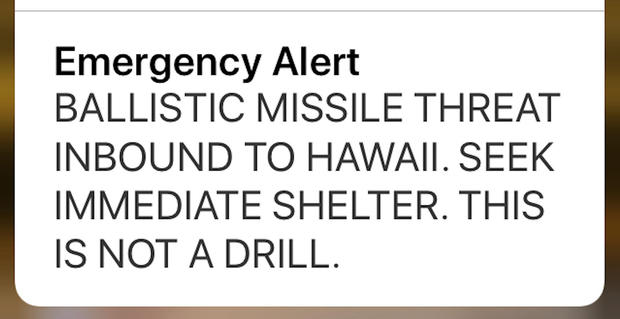
A combination photograph shows screenshots from a cell phone displaying an alert for a ballistic missile launch and the subsequent false alarm message in Hawaii January 13, 2018. REUTERS/Hugh Gentry
January 14, 2018
(Reuters) – Some of the world’s top professional golfers were panicked by a false report of an incoming ballistic missile in Hawaii on Saturday, with one hiding under a mattress and another fleeing to the basement of his Honolulu hotel.
The alert, issued shortly after 8 A.M. local time (1800 GMT), was sent mistakenly some three hours before the start of the third round of the PGA Tour’s Sony Open.
“So…….this can’t be good. Everyone is freaking out in the hotel,” Steve Wheatcroft tweeted at 8.14 A.M. local time (1814 GMT).
Another player, J.J. Spaun, took refuge in his hotel basement.
“Barely any service. Can you send confirmed message over radio or tv,” he said in a tweet at 8.26 A.M.
Two minutes after that, John Peterson revealed the evasive steps he had taken.
“Under mattresses in the bathtub with my wife, baby and in laws. Please lord let this bomb threat not be real,” tweeted Peterson, who was tied for second place halfway through the tournament.
Peterson and Spaun evidently took longer than Justin Thomas to receive word the warning had been sent out by mistake.
“To all that just received the warning along with me this morning … apparently it was a ‘mistake’ – hell of a mistake!! Haha glad to know we’ll all be safe,” Thomas, the defending champion and world number four, tweeted at the same time as Spaun.
The third round started on time at Waialae Country Club.
(Reporting by Andrew Both in Cary, North Carolina)

